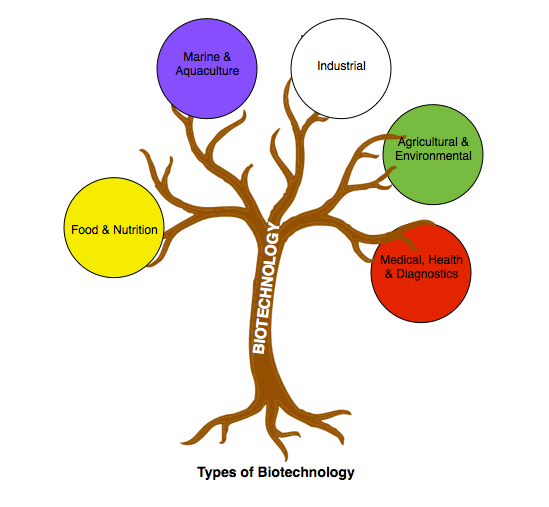As the Coronavirus rages and spreads its impact on the world and the lives of billions, a peculiar field of study has become the cynosure of everyone’s eyes: Biotechnology. We, at biokimicroki, are going to provide some basic writings on this topic curated from our readers. Read on to know, What is Biotechnology, what are its different types, how it is branched, and what are its application?
Introduction
Biotechnology can be called as cocktail of Biology and Technology. It is an interdisciplinary field in which living organisms and their derivatives can be used to develop different products that are useful for society. Biotechnology is an emerging branch of biology, which contributes in boosting the Global and National economy The application of this field ranges from Healthcare, Medicine, Environmental Science, forensic Science, Agriculture and many more such.
Hungarian engineer Karl Ereky first coined the term ‘Biotechnology’ in 1919.
The field is way older than we think, which has amplified in late 19th and 20th century.
The spectrum of applications of Biotechnology is as diverse as the visible range of electromagnetic radiation. As a result, different sectors of Biotechnology have been divided and named with different colours. Let’s see the different sectors of Biotechnology:
1) RED BIOTECHNOLOGY:
Red biotech inclines towards the medical sector. The main goal is to improve health care by using living organisms, and developing vaccines with the help of genetic engineering.
Hepatitis B, Hepatitis A, DPT, Insulin (hormone), and polio vaccines are the products of Red biotech. This technology is also used in Animal farming where, by using genetic tools, the quality of meat and eggs is improved. Development of hormones, stem cells, creation of artificial organs, Si RNA and diagnostics test are part of RED biotech.
Red Biotechnology contributes a good 50% of all the commercially available medicines.
2) GREEN BIOTECHNOLOGY:
This sector of biotech inclines towards agriculture and environment.
Green Biotech has led us to revolutionise the conventional agriculture methods. Techniques like micro-propagation, bio-pesticides, plant tissue culture, genetically modified crops are all consequences of green biotech. Cloning of good trait crops, overcoming crop infertility, and improving nutritional values of crops are few of the important applications of Green Biotechnology.
The Green sector is constantly conducting research to solve scarcity of food, malnutrition, pest problem etc. The Green Biotechnology has made seasonal fruits and vegetables available across the year.
E.g.: – BT corn is a transgenic corn, and are resistant to insects, because it is genetically modified for producing insecticidal protein.
3) WHITE BIOTECHNOLOGY:
Industrial revolution has given new turn to human civilization. It has eased our lives and contributed different products for our needs. However, at the same time, it has also led to deforestation, destruction of habitats, caused pollution, and Global Warming.
White Biotech intends to solve the problems caused by Industries. The main motive is to produce sustainable technology and protect environment. It is developing bioremediation methods, biofuels, biodegradable products, and many more eco-friendly technology. For ex. Plastic producing companies produce non-biodegradable plastic, which is easy to use. And therefore, it has replaced traditional materials like wood and metals. But at the same time, plastic is simply being dumped owing to its non-biodegradable nature. In such a scenario, white biotech come into picture to find a solution which will reduce the pollution caused by plastic.
Carbios is a biotech- based company, working on recycling commonly used plastic using microbial enzymes. And some companies are working of development of biodegradable plastic. It is dedicated to solve the Global Warming problem by employing Biofuel production method, synthesising bioplastic, and inventing sustainable, and eco-friendly technology. And in this respect, 3rd generation of biofuel from algae has been produced.
White Biotech Industries are synthesising and producing biocatalysts to degrade the hazardous waste. As per many reports, White Biotech has helped to reduce 33 million tons of carbon dioxide emission.
This field of Biotech is the need of the hour in order to continue to get the benefits of Industries and but also avoid and overcome its drawbacks.
4) YELLOW BIOTECHNOLOGY: –
Yellow Biotechnology includes the Food Industry. It is inclined towards conducting research and bio-engineering or genetic engineering experiments to improve the food. Most importantly, this sector is goal is to reduce the pollution caused by the meat Industry and hence making the Industries sustainable. Yellow Biotech also includes dairy products, wine making, and brewing by fermentation.
Yellow biotechnology also studies insects. The study and characterisation of insects is important because they have evolved with diverse adaptation system. In the field of agriculture, insect study is conducted in order to understand genes that are causing the destruction of crops.
5) BLUE BIOTECHNOLOGY:
This sector of biotech is more inclined towards cosmetics, health care, and aquaculture obtained from marine resources. Addition to this, it helps in obtaining biofuel from microalgae.
Blue biotechnology studies the diversity of life forms present in the oceans by using modern Molecular Biology tools and techniques. Restoring the aquatic wildlife and preservation of marine organisms are part of blue biotech.
Blue Biotechnology works to fulfill the rising demand of high quality fisheries and aquaculture. It is also leans in the domain to produce nutraceuticals from marine life. For example, the omega -3 fat derived from fish oil and phytoplankton are crucial part of human diet. The other nutraceuticals derived from marine environment are fish protein, seaweeds, microalgae, chitin, chitosan(sugar), phytochemicals, amino acids, microalgae, etc. The marine life also found to be good source for developing new medicines.
The green fluorescents proteins from jelly fish and luciferase enzymes from Vibiro fischeri, shrimp alkaline phosphate are some important products that are developed through Blue Biotechnology. These are the reporters protein used in molecular biology.
By using genetic engineering techniques, the fishes are modified to enhance their quality, growth and resistance. AquAdvantage Salmon is an example of US FDA approved genetically modified animal which can be consumed by human. But there are many ethical concerns, economics concerns regarding this sector.
The blue biotech industry should be used to its fullest for reviewing and protect the marine environment because human have turned large part of marine area into unfit type for living of aquatic animals, thus this prevention should be main concern now-a-days.
My take on this:
Considering the wide spectrum of Biotechnology, it is applied to all the fields in which life forms are involved. The area of working of different colours might be overlapping because of its interdisciplinary application. Biotechnology gives us hope ro resolve the problems of 21st century and hence it is called as Key Technology of 21st Century.
If you liked this resource, please Like, Share, and Subscribe us for more content.

Saheb Singh
A Biotech student. Foodie, Traveller, Banging Tabla, smashing the Bhangra, a Paaji in Gujjiland.



Quite informative…great work pappaji